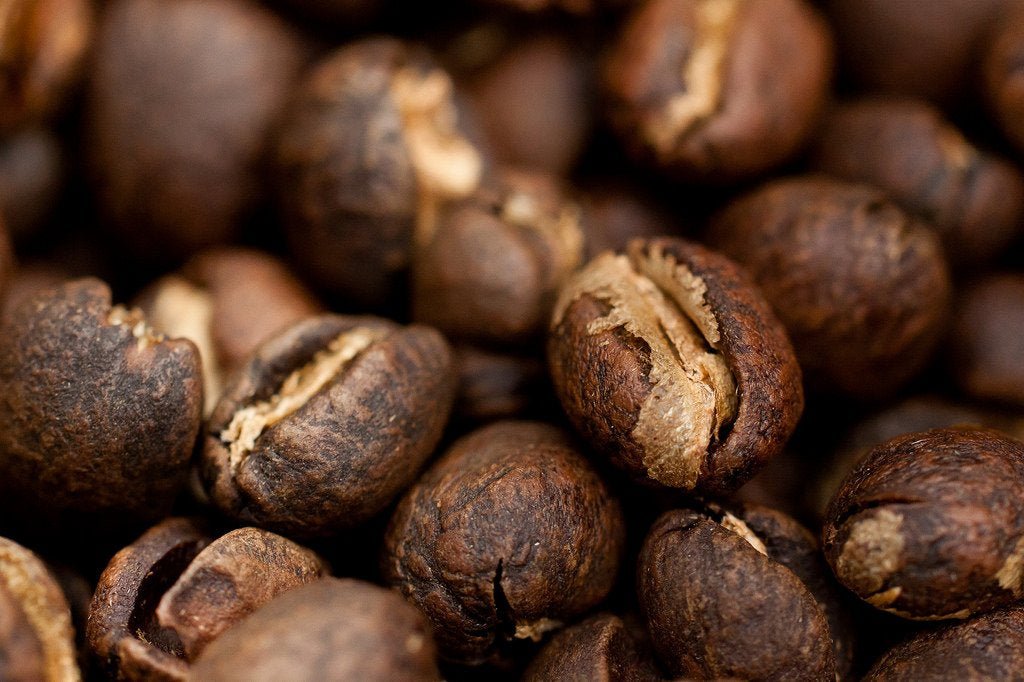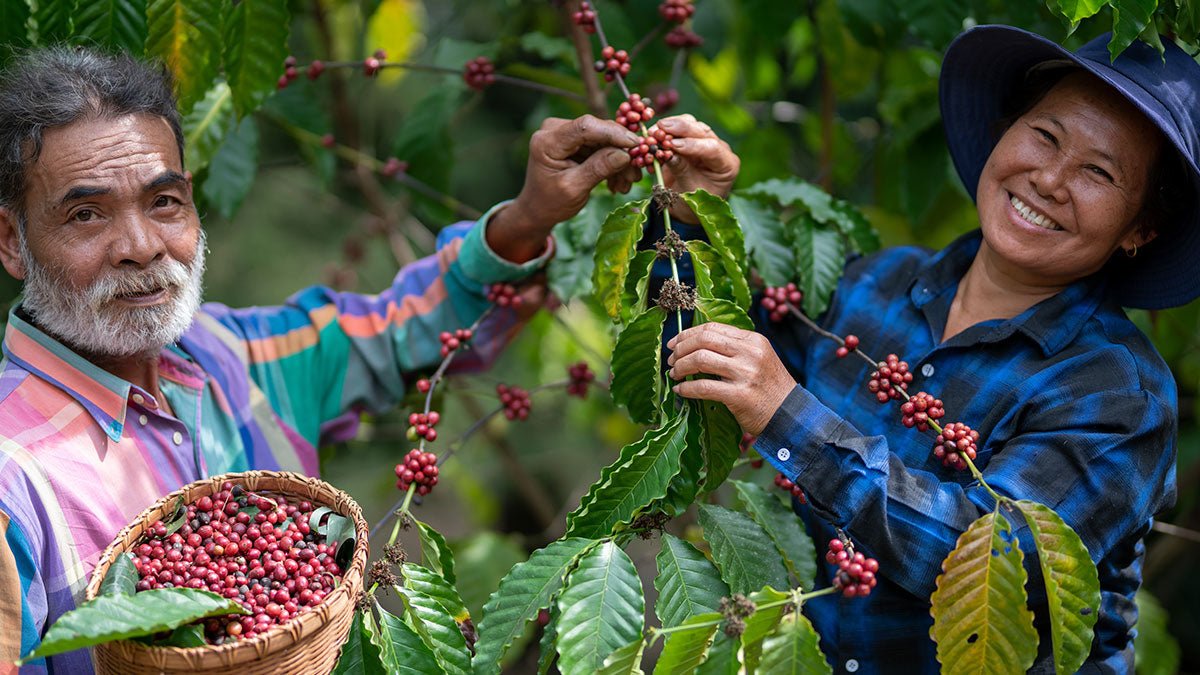Why Brew Lovers Prefer SOE Single Origin Espresso for Clarity
Why Brew Lovers Prefer SOE Single Origin Espresso for Clarity
Blog Article
Discovering the Abundant Tastes of Coffee Beans: a Deep Study Espresso and Blended Coffee Beans
You reveal a complex world where each selection brings its very own personality to your cup when you check out the abundant tastes of coffee beans. Understanding the beginnings, processing techniques, and toasting strategies can change your coffee experience. As you navigate through the art of coffee and the creativity behind mixed coffees, you'll start to appreciate the nuances that make each sip distinct. What you'll uncover next might transform the method you enjoy your early morning brew.
The Origins of Coffee Beans: Checking Out Terroir and Taste Profiles
When you take a sip of coffee, you're not just enjoying a beverage; you're experiencing a rich tapestry of flavors formed by the beans' beginnings. Each region generates special flavor profiles affected by altitude, climate, and dirt. As an example, beans from Ethiopia typically break with intense, fruity notes, while those from Colombia tend to provide a well balanced, nutty sweetness.As you discover different beginnings, you'll discover just how terroir-- the environmental variables influencing a plant-- plays a vital role. The same coffee range can taste drastically different depending on where it's grown.When you consider these factors, you start to appreciate the intricacy behind your mug. Each sip tells a story of the land and the farmers that nurtured the beans. So, next time you delight, consider the trip your coffee took before it reached your hands, and relish those detailed flavors that mirror its origin.
Recognizing Coffee: The Art and Science Behind the Brew
It's not simply about the strong taste; it's additionally about the strategies that bring it to life when you believe about espresso. Understanding exactly how different prep work techniques influence preference can change your brewing experience. Allow's explore the complexities of espresso prep work and uncover the unique flavor profiles that make each cup special.
Coffee Prep Work Techniques
Espresso prep work is both a scientific research and an art, incorporating accurate methods with a deep understanding of coffee. To begin, you'll intend to select top notch, freshly roasted beans and grind them finely for optimal extraction. The grind size is essential; also crude, and your coffee will be weak, as well great, and it'll be bitter.Next, tamp the premises evenly in the portafilter to assure uniform removal. When you lock it right into the maker, go for a brewing temperature level between 190 ° F and 205 ° F.As you pull the shot, expect the best removal time-- around 25-30 secs. The result must be a rich, creamy coffee with a stunning layer of crema on top - SOE. With technique, you'll understand these techniques
Taste Accounts Explained
The world of espresso offers an abundant tapestry of flavor profiles that can elevate your coffee experience. You'll see an equilibrium of sweet taste, resentment, and acidity when you take that initial sip. Each coffee bean lugs unique notes, from fruity and flower to nutty and chocolaty. Light roasts usually display intense level of acidity and dynamic flavors, while dark roasts present deeper, bolder tones.Understanding these profiles aids you choose the appropriate coffee for your palate. Exploring with various blends can reveal shocking mixes. A well-crafted mix may harmonize the intense notes of an Ethiopian bean with the abundant, chocolatey undertones of a Brazilian bean. Accept the trip of finding espresso's diverse flavors, and you'll change your coffee ritual right into an exciting adventure.
Handling Methods: Just How They Influence Taste and Scent
While it could appear that the beginning of coffee beans is one of the most considerable element in identifying their flavor and scent, the handling methods utilized post-harvest play a similarly essential role. You'll find that these approaches can significantly modify the final taste profile of your cup.For instance, the washed process removes the fruit from the beans prior to fermentation, commonly causing a cleaner, brighter taste. The all-natural process leaves the fruit undamaged throughout drying out, resulting in a sweeter, fruitier profile.Other techniques, like honey handling, strike an equilibrium, enabling some fruit mucilage to continue to be, providing a distinct complexity.Each handling method interacts with the beans' inherent features, enhancing or silencing particular flavors and aromas. So, when you drink that espresso or combined coffee, keep in mind that the journey from cherry to mug is influenced not simply by beginning however also by how those beans were processed.

Toasting Methods: Unlocking the Full Prospective of Coffee Beans
Toasting techniques are crucial for exposing the complete capacity of coffee beans, as they transform raw, eco-friendly beans into the aromatic, tasty coffee you delight in. The choice of toasting approach-- light, medium, or dark-- drastically affects flavor accounts. Light roasts preserve the beans' natural level of acidity and fruity notes, while tool roasts balance sweetness and richness. Dark roasts, on the various other hand, emphasize strong, great smoky flavors.You can try out roasting times and temperature levels to locate your ideal brew. A slower roast at lower temperatures enables intricate tastes to develop, while a quicker roast can escalate bitterness. Focus on the fractures throughout roasting; the first split shows a light roast, while the 2nd fracture signals a dark roast - Single Origin Espresso. By mastering these strategies, you'll expose a globe of flavor, boosting your coffee experience to brand-new elevations. Appreciate every sip, knowing the care that entered into your cup!
The Magic of Blended Coffee: Producing Unique Taste Experiences
Developing a special taste experience with mixed coffee can change your morning ritual into an expedition of taste. By incorporating different beans from various look at these guys areas, you can expose a symphony of flavors that boost your mug to new elevations. Each mix deals an unique profile, balancing level of acidity, body, and sweet taste to develop something genuinely special.When you choose a mix, you're not simply choosing a coffee; you're picking a trip across varied landscapes and cultures. Experimenting with various mixes enables you to discover your individual faves, whether you appreciate fruity notes or rich, chocolatey undertones.Blended coffee also provides you the adaptability to adjust the mixture to fit your mood. You might yearn for a light-bodied blend someday and a vibrant, dark roast the following. Welcome the magic of blending and allow each mug shock your palate, making every sip a wonderful journey.
Sampling Notes: Recognizing the Subtleties in Your Mug
As you drink your coffee, you could notice a spectrum of tastes dancing on your palate, each exposing the details of the beans. You may taste the brilliant acidity similar to citrus or the deep, abundant notes comparable to dark delicious chocolate. The sweet taste could evoke honey or sugar, stabilizing the general profile beautifully.Pay interest to the body of the coffee-- does it really feel light and ventilated, or is it full and luscious? The finish, also, provides clues; a remaining aftertaste might hint at nuttiness or flower undertones.Don' t neglect to check out the distinct attributes of different beginnings, as each area presents distinct flavors. For circumstances, Ethiopian coffees usually present fruity notes, while Colombian beans why not find out more may showcase an extra spherical sweet taste. By acknowledging these subtleties, you'll strengthen your admiration for every mug, raising your coffee experience to new heights.

Brewing Methods: Optimizing Taste Removal for each Bean
You'll find that each method can significantly impact the taste profile of your coffee when you discover the numerous brewing techniques. From French press to pour-over, each method extracts various substances, enhancing or muting details notes. As an example, making use of a French press permits oils to remain in the mixture, creating a richer preference, while pour-over emphasizes clarity and brightness.Temperature and grind dimension also play important duties. A coarser work works best for chilly brews, while a great grind is perfect for coffee. Explore water temperature level-- in between 195 ° F and 205 ° F-- can expose concealed tastes, too.Don' t forget steeping time; a fast extraction can result in sour notes, while over-extraction may yield bitterness. By readjusting these variables, you can make best use of flavor extraction and absolutely raise your coffee experience. Take pleasure in the trip of discovering what technique finest fits your palate!
Often Asked Inquiries
What Is the Perfect Water Temperature for Brewing Coffee?
The perfect water temperature level for developing coffee's between 195 ° F and 205 ° F. If you make use of water that's as well warm, you'll over-extract flavors; also chilly, and you won't remove enough. Purpose for that wonderful spot for the ideal brew!
Just How Does Grind Size Affect Coffee Flavor?
Grind dimension considerably impacts coffee taste. Finer grinds essence extra tastes and oils, resulting in a bolder preference, while coarser grinds return a lighter flavor. Changing work dimension helps you accomplish your desired coffee profile.
Exist Wellness Advantages Surrounding Alcohol Consumption Coffee?
Yes, drinking coffee can provide health and wellness advantages. It might improve cognitive feature, boost metabolism, and lower the threat of certain illness. Just keep in mind to enjoy it in moderation to profit without damaging impacts.

What Is the Difference Between Arabica and Robusta Beans?
Arabica beans are smoother and sweeter, commonly featuring fruity flavors, while robusta beans are more powerful with a bitter taste and greater caffeine material. You'll see these differences in fragrance and brewing experience.
Exactly How Can I Store Coffee Beans for Quality?
To keep coffee beans for freshness, maintain them in an impermeable container, away from light, wetness, and heat. You'll keep their flavor longer if you just grind what you need right prior to brewing. When you check out the abundant flavors of coffee beans, you discover an intricate globe where each range brings its very own personality to your mug. When you take a sip of coffee, you're not just delighting in a drink; you're experiencing a rich tapestry of tastes shaped by the beans' beginnings. While from this source it might seem that the beginning of coffee beans is the most significant factor in determining their taste and fragrance, the handling techniques utilized post-harvest play a similarly important duty. Toasting strategies are necessary for disclosing the full possibility of coffee beans, as they change raw, environment-friendly beans into the aromatic, tasty coffee you enjoy. As you sip your coffee, you could see a spectrum of tastes dancing on your palate, each exposing the intricacies of the beans.
Report this page